Peru elected Pedro Castillo and Keiko Fujimori for its Presidential Election run-offs last April 11th This was surprising, to say the least. Far-left candidate Pedro Castillo never appeared on the polls until election day and far-right candidate Keiko Fujimori had just been imprisoned in 2020 for corruption and other charges. In polls, she had high disapproval rates from the population at large [2]:
Pedro Castillo: A union leader, and teacher with a very strong support in rural areas, the inside of the country, and the Andean world, who was rather unknown by people in the capital. [3] He obtained 19% of the total votes. Venezuelan migrants are very much against his candidacy.
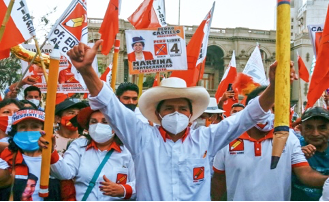
Keiko Fujimori: Formerly imprisoned, & at risk of further imprisonment due to money laundering, organized crime, and justice obstruction. Daughter of former President and currently imprisoned, Alberto Fujimori. She obtained 13.4% of the votes, primarily, from the working class. [2]
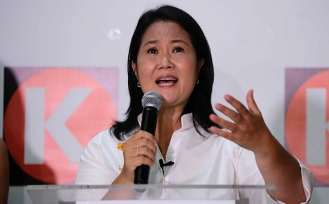
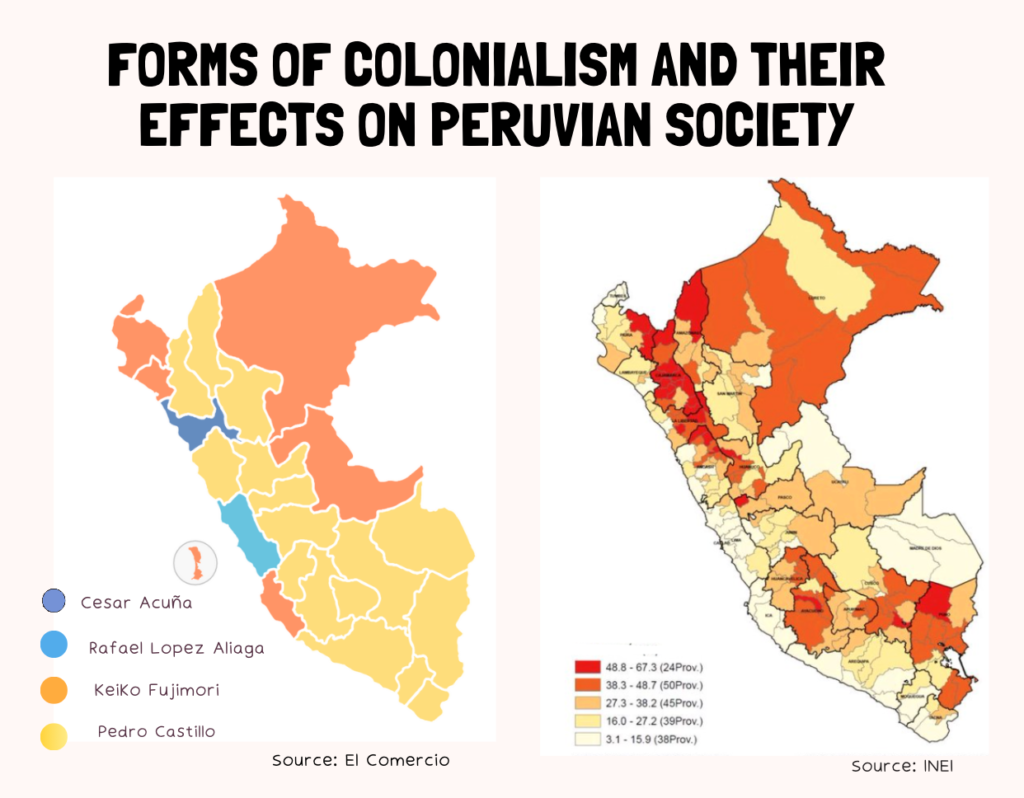
The election revealed a division and misunderstanding between Peru’s middle and upper class, the government, the media, and its working classes. As Mr. Jonathan Castro, political journalist and Peruvian researcher for The Washington Post said: “Peruvian centralism (the concentration of power in the President’s Office and the Congress), aggravated by the COVID-19 pandemic and the transportation restrictions, generates a serious gap between the interpretation of Peru’s reality”. [2]
According to Mr. Melendez, an academic from Diego Portales University and researcher of Peru: residents of Lima and the northern coast tend to be “pro-establishment”, meaning that they support the current economic system and the socioeconomic status quo in the country; they will vote for Keiko in the run-offs. By contrast, “the rest of the country, the Andean world, votes for Castillo”. [3]
The following figure presents the predicted voter distribution per socioeconomic group for the June election run-offs:

While there are classed differences in support for the candidates, with a greater proportion of working class supporting Castillo and affluent urban people supporting Fujimori, that latter also has been capturing some urban working class votes.. One can observe from the previous figure that there is a split between the working class who want to reimagine and/or change the system with Castillo and those who would rather have a corrupt government with Fujimori because of their fear of a radical left and their desire to preserve the socioeconomic status-quo.
What led Peruvian society into this situation? Why is there such a big division in candidate preferences across socioeconomic levels in the country?

Peru’s Colonial History
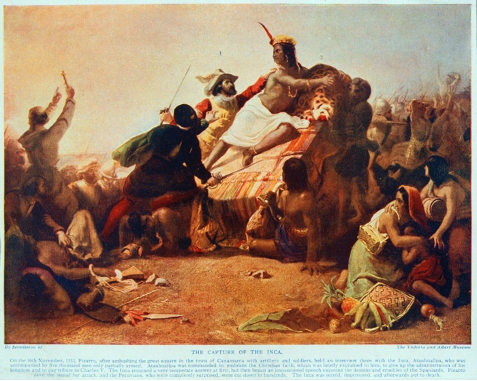
Atahualpa flung the bible to the ground. Pizarro signaled. Amid fire and trumpet blasts, thousands of dumbfounded natives were slaughtered, the Inca was captured and executed. [1]
Attracted by the gold and silver the Inca Empire had, Francisco Pizarro, a Spanish colonizer, colonized Peru in 1533. [1] The Inca Empire was devastated. 90% of the Inca population succumbed to new diseases. The Spanish established Spanish as the primary language and Catholicism as the sole religion in the Colony. [5]
The Spanish established a strict, hierarchical social system, which dictated the access people could have to institutions such as town halls, religious orders, the military, unions, schools, and colleges based on people’s level of racial purity [6]:
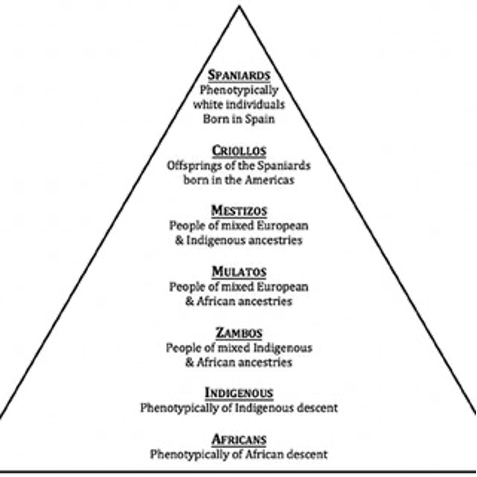
This period marked the start of a history of inequality, discrimination, racism, and perceived institutional failure in the Peruvian territory. [9] Nowadays, Peruvian society remains stratified with high levels of racial discrimination and sexism, as well as weak and inefficient institutions in the country. [14] [15]
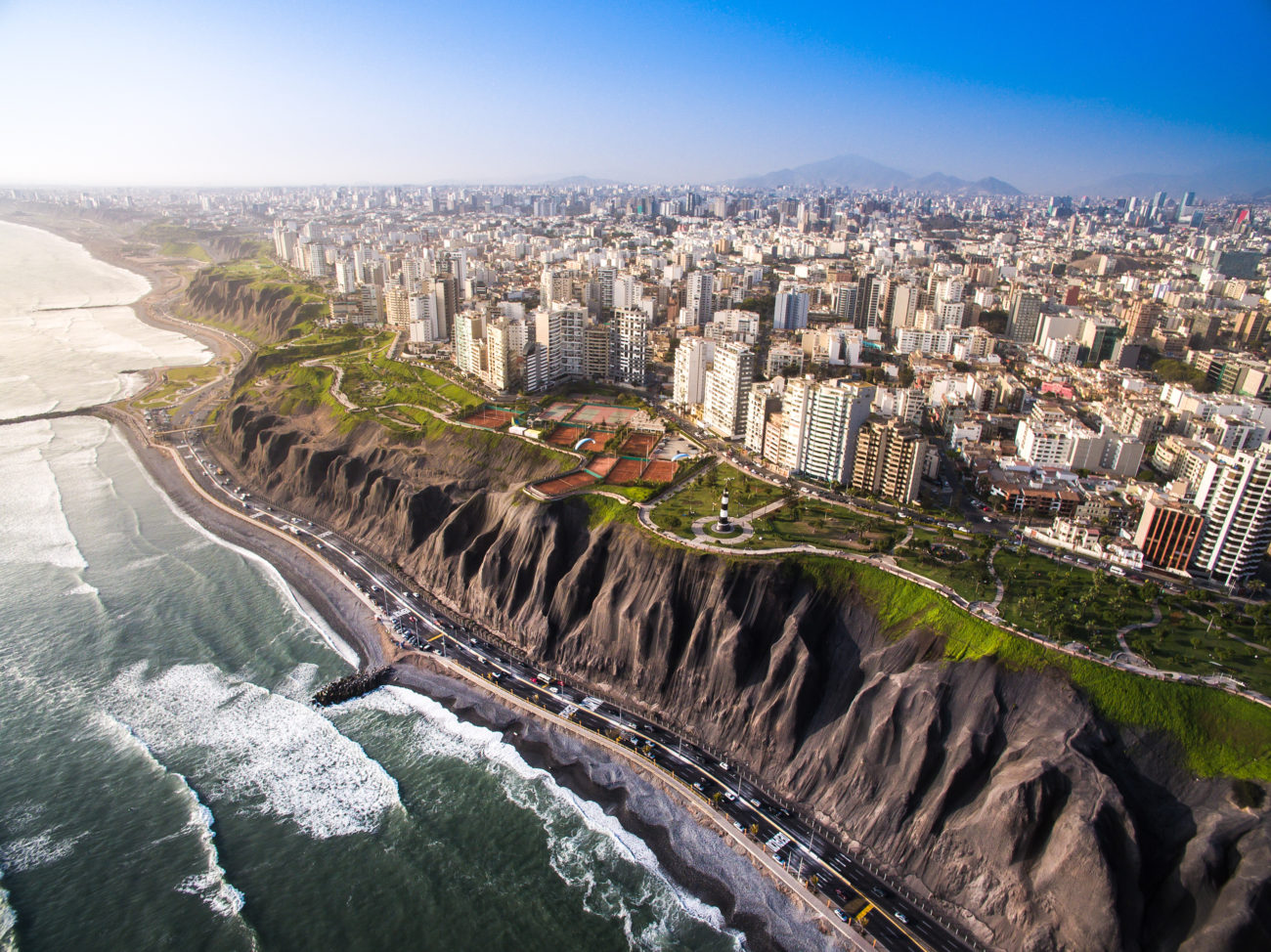
Peru’s Colonial Present – Neoliberal Democratic Reforms
In August 1990, former President Alberto Fujimori’s government started to apply the Washington Consensus neoliberal program (a set of economic policies advocated for developing countries in crisis encouraged by the International Monetary Fund, World Bank and United States Department of the Treasury) as a response to the country’s GDP contracting by 12.3% in 1989.
Some characteristics of the neoliberal reform are the following [16]:
- Eliminate subsidies, set priorities for public spending, and reduce government spending in healthcare, education, infrastructure, and welfare programs.
- Increase tax revenue through an increase in the tax basis across all levels of society and moderate marginal taxes.
- Government deregulation to increase competition among private businesses.
- Privatization of public institutions based on the idea that resources have to be assigned through the free market.
- Avoid restrictions on exports and imports to encourage the flux of foreign capital.
This prompted an influx of foreign capital into Peru, primarily from developed countries such as the US. This left the Peruvian economy vulnerable to changes in the international political economy, and flooded Peruvian society with American and occidental cultures, trends, values and ideals. In particular, neoliberal reforms emphasized individual responsibility and consumerism, the latter being used to dictate an individual’s worth since colonial times. [8]
“For 40 years, elites in rich and poor countries alike promised that neoliberal policies would lead to faster economic growth, and that the benefits would trickle down so that everyone, including the poorest, would be better off. Now that the evidence is in [slow-down of growth and income inequality], is it any wonder that trust in elites and confidence in democracy have plummeted?”
— 2001 Nobel Prize in Economics, Joseph Stiglitz, 2019
The adoption of an unrestrained free-market economy was detrimental for Peruvian society. Applying neoliberal reforms exacerbated the inequality that Peru’s colonial past created. Also, the idea that everybody is valued by their performances as an individual, and that one can “work his or her way out of poverty” through effort and work, made the country’s institutional and social challenges harder to address and prevented the execution of necessary institutional, structural, and social reform. This furthered the anger, mistrust, and discontent working classes felt towards the government given the visible economic inequalities in the country and the uneven distribution of the wealth being created. [11].

Consequences
And we are back where we started. Then, what led Peruvian society into its current political and socioeconomic situation? Why is there such a big division in candidate preferences across socioeconomic levels in the country?
Most Peruvians have gotten tired of the visible income inequalities and the inefficiency and lack of attention by the public institutions in regard to the needs of the working class and of minorities.
There has been a historical indifference from the Peruvian government towards the needs of the working class, indigenous populations and minorities. Low-income, socially marginalized individuals feel alone and hopeless, and have adopted a self-centered approach to development by doing whatever is necessary for them to have their needs satisfied. This has fueled their lack of trust in the institutions and of the law, which is one of the main reasons Pedro Castillo, a far-left candidate, is the front-runner in the 2021 Elections: He is different, and his promises are aligned to what these people have been demanding for several years. [12]
Marginalized individuals have gotten tired of the lack of understanding of their realities and needs, and the considerable inequalities that remain unaddressed by the government.
Colonialism seems to be a thing of the past; however, its effects continue to reverberate society as evident by the April 11th election results.
References:
- Con el 100% del voto procesado, Pedro Castillo y Keiko Fujimori son los candidatos que pasan a la segunda vuelta de las presidenciales en Perú – BBC News Mundo. (2021). Retrieved 27 April 2021, from https://www.bbc.com/mundo/noticias-america-latina-56713351
- Quién es Pedro Castillo, el maestro de escuela y líder sindical de izquierda que competirá por la presidencia de Perú – BBC News Mundo. (2021). Retrieved 23 April 2021, from https://www.bbc.com/mundo/noticias-america-latina-56732879 [3]
- Caso Keiko Fujimori: Fiscalía pide 30 años de prisión contra la candidata. (2021). Retrieved 23 April 2021, from https://cnnespanol.cnn.com/2021/03/11/keiko-fujimori-prision-fiscalia-peru-orix/
- Castro, J. (2021). Opinión: Elecciones Perú: Un país fracturado enfrenta el dilema del antifujimorismo vs el antizquierdismo. Retrieved 23 April 2021, from https://www.washingtonpost.com/es/post-opinion/2021/04/12/resultados-elecciones-2021-peru-primera-vuelta-castillo-fujimori/ [2]
- Rushbrook, P. (2020). The Conquering of the Incan Empire in Peru. Retrieved 23 April 2021, from https://www.thoughtco.com/colonial-rule-in-peru-1435285#:~:text=In%201533%20Francisco%20Pizarro%2C%20a,90%25%20of%20the%20Inca%20population [5]
- Stiglitz, J. (2019). Committee on Global Thought. Retrieved 23 April 2021, from https://cgt.columbia.edu/news/stiglitz-end-neoliberalism-rebirth-history/
- Stiglitz, J. (2019). The end of neoliberalism and the rebirth of history – Joseph Stiglitz. Retrieved 23 April 2021, from https://www.socialeurope.eu/the-end-of-neoliberalism-and-the-rebirth-of-history
- Características de los niveles socioeconómicos en el Perú. (2020). Retrieved 1 April 2021, from https://www.ipsos.com/es-pe/caracteristicas-de-los-niveles-socioeconomicos-en-el-peru
- Datum | Estas son las instituciones en las que más y menos confían los peruanos. (2018). Retrieved 1 April 2021, from https://rpp.pe/politica/actualidad/datum-estas-son-las-instituciones-en-las-que-mas-y-menos-confian-los-peruanos-noticia-1159914
- Nathan Associates Inc. (2016). WOMEN’S ECONOMIC PARTICIPATION IN PERU [Ebook]. Retrieved from https://www.nathaninc.com/wp-content/uploads/2017/10/US-ATAARI-Peru-Gender-Assessment-final.pdf
- Guerrero, S., & Bello, G. (2020). The rights and inclusion of LGBTI people in Peru in times of coronavirus. Retrieved 1 April 2021, from https://blogs.worldbank.org/latinamerica/rights-and-inclusion-lgbti-people-peru-times-coronavirus
- Delgado, C. (1971). PROBLEMAS SOCIALES EN EL PERÚ CONTEMPORÁNEO [Ebook] (1st ed.). Lima: IEP – CAMPODÓNICO ediciones. Retrieved from http://www.lanic.utexas.edu/project/laoap/iep/ddtlibro10.pdf
- Impacto del COVID-19 en los problemas sociales en contextos Urbanos y Rurales del Perú – CENTRUM THINK. (2020). Retrieved 1 April 2021, from https://centrumthink.pucp.edu.pe/impacto-del-covid-19-en-los-problemas-sociales-en-contextos-urbanos-y-rurales-del-peru
- Martuccelli, D. (2015). Lima y sus Arenas [Ebook] (pp. 245-292). Lima: Cauces Editores. [12]
- Leon, Pedro De Cieza De, Alexandra Parma Cook, and Noble David Cook. The Discovery and Conquest of Peru. Durham, NC: Duke University Press, 1999.
- Heming, John. Conquest of the Incas. New York: Harcourt Brace Jovanovich, 1973. [1]
- Shaffer, Peter. The Royal Hunt of the Sun: A Play Concerning the Conquest of Peru. New York: Stein and Day, 1964.
- Martinez, M. (2010). Social Order in the Spanish New World [Ebook] (1st ed.). PBS. Retrieved from http://inside.sfuhs.org/dept/history/Mexicoreader/Chapter3/Social%20Order%20in%20the%20Spanish%20New%20World.pdf [6]
- Blogs.uoregon.edu. 2018. The social stratification of New Spain | Tricks to Inherit. [online] Available at: <https://blogs.uoregon.edu/tricks2inherit/the-social-stratification-of-new-spain/> [Accessed 19 April 2021]. [7]
- Mauceri, P. (1995). STATE REFORM, COALITIONS, AND THE NEOLIBERAL AUTOGOLPE IN PERU [Ebook] (1st ed.). Iowa: University of Northern Iowa. Retrieved from https://www.jstor.org/stable/2504085?seq=1#metadata_info_tab_contents [8]
- Mahoney, J., Lange, M., & vom Hau, M. (2006). Colonialism and Development: A Comparative Analysis of Spanish and British Colonies [Ebook]. The University of Chicago. Retrieved from https://www.jstor.org/stable/10.1086/499510?seq=1#metadata_info_tab_contents [9]
- Marx, K., & Engels, F. (2011). The communist manifesto. New York: Penguin Books. [10]
- Stiglitz, J. (2019). The End of Neoliberalism and the Rebirth of History | by Joseph E. Stiglitz – Project Syndicate. Retrieved 16 April 2021, from https://www.project-syndicate.org/commentary/end-of-neoliberalism-unfettered-markets-fail-by-joseph-e-stiglitz-2019-11?barrier=accesspaylog [11]
- Contreras, C., Gruber, S., & Mazzeo, C. (2012). Orígenes históricos de la desigualdad en el Perú – PUCP | Departamento de Economía. Retrieved 20 April 2021, from https://departamento.pucp.edu.pe/economia/documento/origenes-historicos-de-la-desigualdad-en-el-peru/ [14]
- Belaunde, G. (2020). Corrupción, Debilidad Institucional y Riesgo País: ¿Seguiremos igual? | Blogs | GESTIÓN. Retrieved 20 April 2021, from https://gestion.pe/blog/riesgosfinancieros/2020/01/corrupcion-debilidad-institucional-y-riesgo-pais-seguiremos-igual.html/ [15]
- Moreno-Brid, J., Pérez Caldentey, E., & Ruiz Nápoles, P. (2004). El Consenso de Washington: aciertos, yerros y omisiones. Retrieved 20 April 2021, from http://www.scielo.org.mx/scielo.php?script=sci_arttext&pid=S0188-76532004000200006 [16]
- IEP & La Republica. (2021). IEP Informe de Opinión – Marzo I 2021 Intención de voto- Elecciones Generales 2021 [Ebook] (1st ed.). Lima. Retrieved from https://iep.org.pe/wp-content/uploads/2021/03/Informe-IEP-OP-Marzo-I-2021-final.pdf [21]